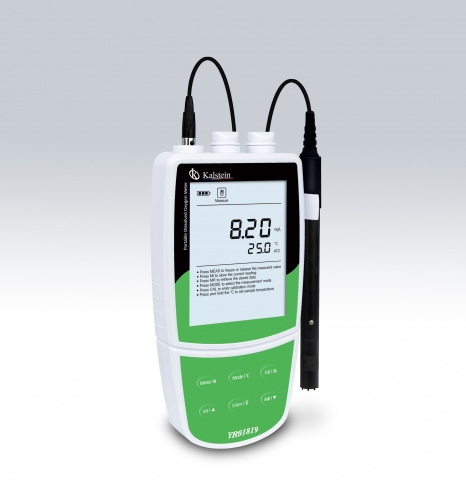A conductivity meter is a laboratory equipment, which allows measuring the amount of electrical current or conductance of a solution, in other words, allows knowing the conductivity (electrical charge) in water body, parameter of utmost importance in the evaluation of the general health of natural water bodies.
It is also used to detect changes in wastewater procedures in treatment plants and in any water treatment or monitoring procedures, as well as in environmental analysis laboratories.
What is the conductivity of a dissolution?
Conductivity is the ability of a dissolution to conduct electric current. It is a measure of the total ionic concentration that has a solution. The unit of the International Conductivity System is the siemens per meter (S/m).
Conductivity is commonly used in many industrial applications and environmental studies as a reliable way to measure the ionic content of a solution. Therefore, the conductivity measurement is used to evaluate the performance of water purification systems.
How does a conductivity meter work?
A conductivity meter has a test tip. When the measuring probe is placed in the liquid to be measured, the meter applies voltage between two probe electrodes. The electrical resistance of the solution causes a drop in voltage, which is read by the meter. The meter converts this reading into millimicromhos or millimicrosiemens per centimeter.
The meter measures the electrical conductivity of the ions in a solution in a solution. For this, simply apply an electric field between two electrodes and measure the electrical resistance of the dissolution. To avoid changes in substances, layer effect on electrodes, an alternating current is applied. Today there is a wide variety of models of conductivity meters. Some of them include measurements of TDS (total dissolved solids). Notebook PCs allow for use in and out of the lab, while desktop models have greater complexity and more specific features.
How should a conductivity meter be used?
To start using a conductivity meter you must insert the probe of the equipment into the water body to be analyzed, the equipment must not be placed less than 10 cm high, it must be ensured that the probe is immersed in the dissolution in at least 5 cm. Then wait about 5 seconds until the measurement is stabilized, if you want to make measurements with different solutions or in different places, they must be measured from the lowest conductivity to the highest conductivity.
To choose the ideal conductivity meter for your laboratory, it is key to specify the types of materials that will be subjected to conductivity analyzes. The desktop is the ideal computer for labs and field laptops.
What do we offer you in Kalstein?
Kalstein is a company MANUFACTURER of medical and laboratory equipment of the highest quality and the best technology at the best prices in the market, so you can make your purchase confidently with us, knowing that you have the service and advice of a company specialized in the field and committed to innovation. In this opportunity we present our Handheld Conductivity Meter °C/°F YR01807, very useful in water and water treatment, wastewater and other industrial processes, this new equipment has the following characteristics: HERE
- Economical pocket conductivity tester for measuring high conductivity liquids, precision: 1% FS.
- The high-range pocket conductivity tester is equipped with a platinum sensor.
- 1-point button calibration allows you to use your custom calibration solution.
- Automatic temperature compensation corrects the conductivity measurement.
- The standby function momentarily freezes reading for easy viewing and recording.
- Automatic power-off Power off effectively preserves battery life.
- The replaceable electrode module reduces the cost of maintenance and replacement.
- Waterproof function to ensure complete protection in hostile environments.
For more information we invite you to take a look at: HERE

